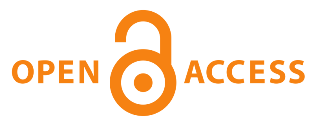Innovation in Waqf Management in the Digital Era to Promote Community Economy: An Implementation Analysis in West Java
DOI:
https://doi.org/10.56442/ijble.v6i2.1288Keywords:
Digital Waqf, Innovation, Community Empowerment, Islamic Social Finance, West JavaAbstract
The rapid development of digital technology has transformed waqf management, enhancing efficiency, transparency, and inclusiveness in community-based economic empowerment. This study aims to analyse digital innovation in waqf management in West Java and its contribution to strengthening the community economy within Indonesia’s legal framework, particularly the Electronic Information and Transactions Law (Law No. 11 of 2008). Employing a qualitative case study design, data were collected through interviews, observation, documentation, and literature review. The findings reveal that waqf institutions in West Java have adopted digital applications, crowdfunding platforms, QRIS payment systems, and online dashboards that increase wakif participation, transparency, and the growth of MSMEs and employment. However, challenges persist in digital literacy and infrastructure readiness. Digital waqf has strong potential as a sustainable economic empowerment instrument through professional governance, adaptive regulation, and reliable technological systems.
References
Al-Manna’, A., Hussein, M., & Rahim, S. (2021). Implementation of digital wakaf platforms and their economic impact: Evidence from Malaysia. International Journal of Islamic Economics, 12(3), 34–52.
Assets, C. (1993). Asset-Based Community Development ( ABCD ): core principles. Research Handbook on Community Development THE, 67–75.
Aziz, N., & Hamid, R. (2022). Adoption of digital technology among wakaf managers: Challenges and opportunities. Journal of Islamic Philanthropy, 8(2), 90–108.
Badan Wakaf Indonesia. (2022a). Laporan Indeks Wakaf Nasional 2021 (Bagian Provinsi: Jawa Barat, hlm. 89–91). Pusat Kajian dan Transformasi Digital BWI.
Badan Wakaf Indonesia. (2022b). Materi “Transformasi Digital dan Pengembangan Wakaf Nasional” (hlm. 61, 71–75, 100–106). PKTD–BWI.
Braun, V., & Clarke, V. (2006). Using thematic analysis in psychology. Qualitative Research in Psychology, 3(2), 77–101.
Creswell, J. W. (2018). Qualitative Inquiry and Research Design: Choosing among Five Approaches (4th ed.). Sage.
Darma, S. (2025). Gen Z Rural Area Perspective on Use of E-Money Applications in Indonesia. Revista Mexicana de Economía y Finanzas (REMEF), 1–15.
Hasanah, M., Fahruddin, A. R., & Tamami, B. (2021). Exchange Trade Fund (ETF) Syariah: Alternatif Investasi Syariah yang Halal dan Menjanjikan. At-Tasharruf: Jurnal Ekonomi Dan Bisnis Syariah, 3(2), 42–47.
Huda, N. (2021). Islamic financial technology and digital waqf: Opportunities and challenges in Indonesia. Journal of Islamic Accounting and Business Research, 12(4), 621–638. https://doi.org/10.1108/JIABR-03-2021-0085
IRTI–IsDB, Bank Indonesia, & Badan Wakaf Indonesia. (2018a). Waqf Core Principles: Core Principles for Effective Waqf Operation and Supervision. IRTI–IsDB.
IRTI–IsDB, Bank Indonesia, & Badan Wakaf Indonesia. (2018b). Waqf Core Principles: Core Principles for Effective Waqf Operation and Supervision (hlm. 10–14, 21–22, 34–35, 42, 48–60).
Kahf, M. (2016). Waqf: a Quick Overview. 2. http://monzer.kahf.com/papers/english/WAQF_A_QUICK_OVERVIEW.pdf
Kementerian Agama RI. (2024). https://siwak.kemenag.go.id/siwak/index.php.
Kementerian Komunikasi dan Informatika Republik Indonesia. (2023). Statistik penggunaan internet dan adopsi teknologi digital di Indonesia. Kominfo Press.
Latipah, Y., Supriani, I., & Sudarsono, H. (2024). What drives the intention of Millennials and Generation Z to pay ZIS via digital platform? Jurnal Ekonomi Dan Bisnis Islam, 10(2), 380–400.
Maulana, R. (2023). Efektivitas aplikasi mobile wakaf di Kota Bandung. Jurnal Studium Islamicum, 15(1), 120–138.
Misran, F., & Lestari, P. (2019). Kreativitas pengelolaan wakaf komunitas di Jawa Barat. Jurnal Wakaf Dan Pembangunan Ekonomi, 5(2), 70–85.
Mohaiyadin, N. M., Aman, A., Palil, M. R., & Said, S. M. (2022). Addressing accountability and transparency challenges in waqf management using blockchain technology. Journal of Islamic Monetary Economics and Finance, 8(2), 213–235.
Mohsin, M. M. A. (2019). Waqfintech and Sustainable Socio-Economic Development. International Journal of Management and Applied Research, 6(3), 130–141. https://doi.org/10.18646/2056.63.19-009
Munawar, A. (2020). Wakaf produktif dan digitalisasi pengelolaan: Peluang dan tantangan. Jurnal Ekonomi Syariah, 7(1), 40–60.
Patton, M. Q. (2015). Qualitative Research & Evaluation Methods (4th ed.). Sage.
Qolbi, A., Sukmana, R., Ratnasari, R. T., & Sari, N. S. (2024). The role of personal innovativeness on behavioral intention waqf online: Extension of technology acceptance model. Jurnal Ekonomika Dan Bisnis Islam, 7(1), 1–17.
Rahman, T., Syahri, Y., & Nugraha, D. (2022). Crowdfunding wakaf: Inovasi pengumpulan donasi wakaf berbasis online. Jurnal Teknologi Dan Ekonomi Islam, 4(1), 80–95.
Ramli, M. F., Shaari, M. S. M., & Bakhri, B. S. (2022). Influence of cash waqf on economic growth: Evidence from Malaysia. Journal of Finance and Islamic Banking, 5(2), 65–78.
Republik Indonesia. (2004). Undang-Undang Nomor 41 Tahun 2004 tentang Wakaf. Sekretariat Negara Republik Indonesia.
Republik Indonesia. (2006). Peraturan Pemerintah Nomor 42 Tahun 2006 tentang Pelaksanaan UU No. 41 Tahun 2004 tentang Wakaf. Sekretariat Negara.
Republik Indonesia. (2008). Undang-Undang Nomor 11 Tahun 2008 tentang Informasi dan Transaksi Elektronik.
Sari, E., & Nugroho, B. (2021). Hambatan digitalisasi pengelolaan wakaf: Kajian dalam konteks institusional. Jurnal Pengembangan Sosial Islami, 6(3), 110–127.
Shaikh, S. A., Ismail, M. B., & Shafiai, M. H. M. (2017). Application of information technology for efficient management of waqf institutions in Malaysia. International Journal of Academic Research in Business and Social Sciences, 7(4), 1–15.
Suryanto. (2017). Pola Perilaku Keuangan Mahasiswa Di Perguruan Tinggi. Jurnal Ilmu Politik Dan Komunikasi, VII(1), 11–20.
Tanjung, H., & others. (2024). Waqf Core Principles Implementation Index in Dompet Dhuafa Foundation in 2022 (hlm. 1–7). Proceedings of the International Conference.
UU No. 41 Tentang Perwakafan, Undang-Undang Republik Indonesia Nomor 41 Tahun 2004 1 (2004).
Venkatesh, V., Thong, J. Y. L., & Xu, X. (2012). Consumer acceptance and use of information technology: Extending the unified theory of acceptance and use of technology. MIS Quarterly, 36(1), 157–178.
Wadi, D. A., & Nurzaman, M. S. (2020). Millennials’ behaviour towards digital waqf innovation: Evidence from Indonesia. International Journal of Islamic Economics and Finance, 3(SI), 1–32.
Yin, R. K. (2018). Case Study Research and Applications: Design and Methods. SAGE Publications.
Downloads
Published
How to Cite
Issue
Section
License

This work is licensed under a Creative Commons Attribution-NonCommercial-ShareAlike 4.0 International License.







